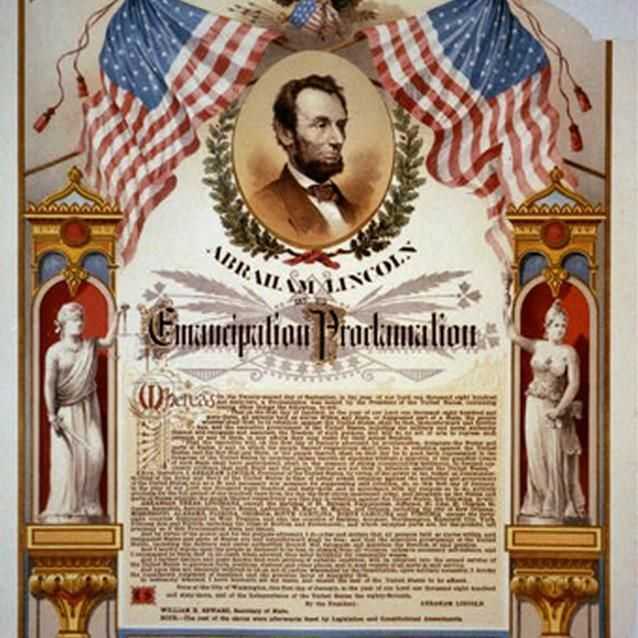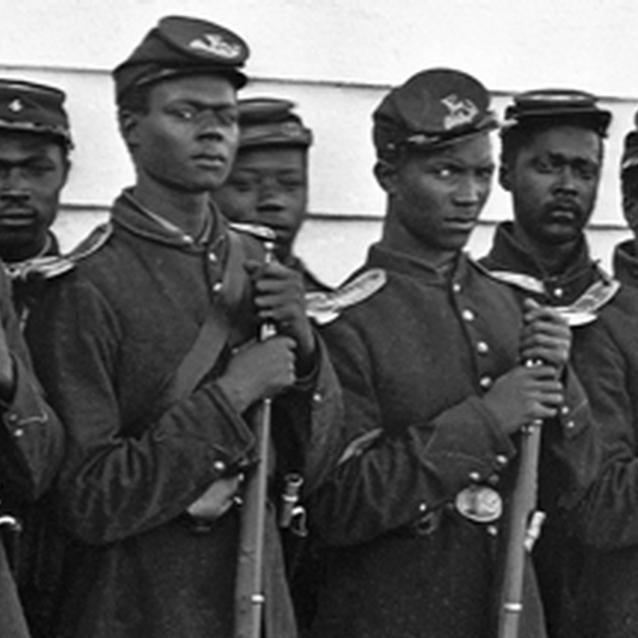Following the Union victory at South Mountain, McClellan prepared to strike Lee's army along the banks of the Antietam Creek. On September 17th, in a bid to crush the Confederates and end the war, McClellan attacked near the town of Sharpsburg. The massive battle cost both armies more than 23,000 dead, wounded, and missing. Unable to absorb such loses, the Confederate army was forced to withdraw from Maryland. While not an absolute victory, the Battle of Antietam shifted momentum to the Union. Empowered by this victory, Lincoln seized the moment and issued the Emancipation Proclamation.
"Things looked darker than ever. Finally, came the week of the battle of Antietam. I determined to wait no longer." President Abraham Lincoln
The Emancipation Proclamation: "Thenceforward and forever free"

Library of Congress
President Lincoln issued the Emancipation Proclamation was in two parts. The preliminary proclamation was introduced September 22nd, 1862, and declared the intent to free enslaved people in those states in rebellion as of January 1st, 1863. It also stated the United States "will recognize and maintain the freedom of such persons." This formally superseded the Contraband Policy and meant that any slave that could escape from Confederate territory would never be returned to their owners.
Cynics and critics at the time and today have been quick to point out that the proclamation only freed slaves in those states "in rebellion against the United States." Secretary of State Seward pointed out this irony:
"We show our sympathy with slavery by emancipating slaves where we cannot reach them and holding them in bondage where we can set them free."
When it went into effect on January 1st, 1863, the Emancipation Proclamation did not free slaves in the "Border States" because Lincoln feared that such an act would drive them into rebellion. However, the proclamation was an obvious harbinger of the complete abolition of slavery. Maryland, Delaware, Kentucky, and Missouri now had enormous pressure on them to end slavery on their own. Maryland took steps to do this with a new state constitution in 1864. All other slave states followed when the 13th Amendment was ratified in 1865, which forever abolished slavery in the now reunited United States.
From Slave to Soldier to Citizen

Library of Congress
Once the proclamation was issued, enslaved people in the South could vote with their feet and flee to the nearest Union camp. The Union Army capitalized on this new momentum, and as more ground was captured, more enslaved people were free.
The Emancipation Proclamation was a bold and necessary step toward abolition. On New Year's Eve 1862, just hours before the proclamation went into effect, thousands of African Americans gathered in communities throughout the North waiting for the day of freedom. As clocks struck midnight, celebrations began and continued for days. Other African Americans, in states loyal to the Union, waited two more years for the 13th Amendment to end slavery.
The final proclamation provided for the recruitment of African American soldiers. By the end of the war approximately 180,000 African American soldiers served in the United States Armed Forces.
Despite their sacrifices and the abolition of slavery, African Americans still confronted obstacles. In 1865, the "Freedman's Bureau" was created to begin the relief effort and the unprecedented social reconstruction to transition African Americans to full citizenship. The process continued as determined people from many backgrounds used politics and protest to fight prejudice and inequality; attempting to form a nation where, as Dr. Martin Luther King Jr. said, "the sons of former slaves and the sons of former slave owners will be able to sit down together at the table of brotherhood."
Part of a series of articles titled Born of Earnest Struggle.
Previous: A Chance at Freedom
Last updated: August 14, 2017
